-
Posts
5,391 -
Joined
-
Last visited
-
Days Won
3
Content Type
Profiles
Forums
Blogs
Gallery
Events
Store
Posts posted by Gordon Williamson
-
-
Very nice Matthias. I have looked for one for some time, but all I ever see are the Ko'Sho type.
0 -
Centre of the ROA close up for DaveB

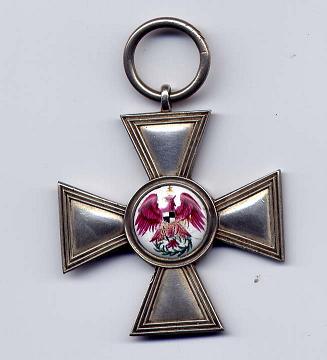

 0
0 -
The ROA 4 Class, is marked on the edge of the 6 o'clock arm also.
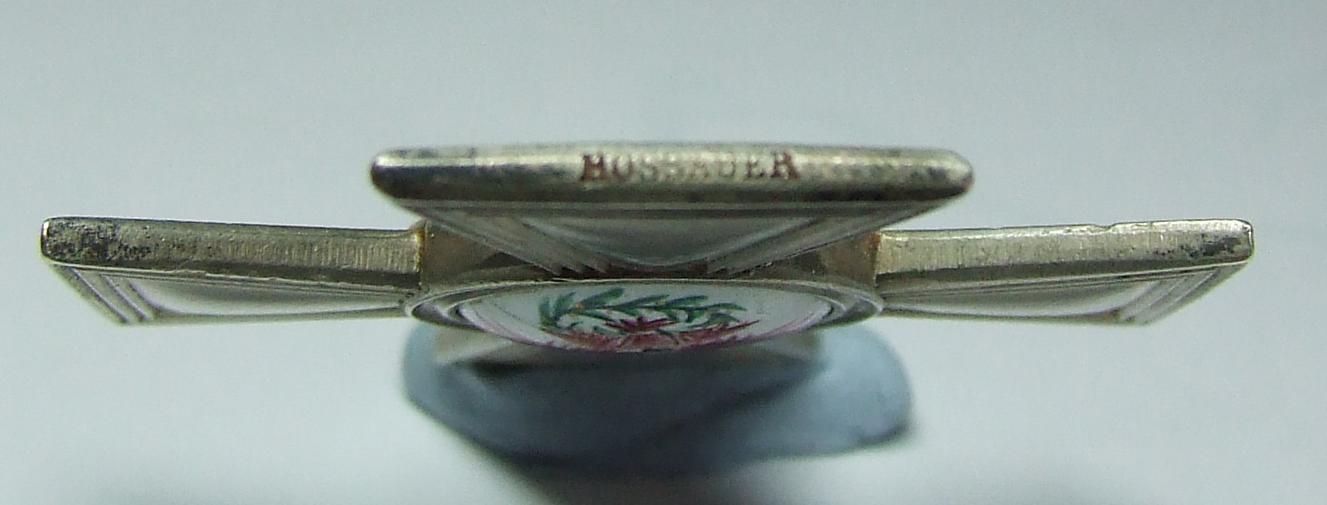
 0
0 -
I'm fascinated by the three Hossauer marked awards which came with my recently acquired 1813 EK grouping and wondered if anyone else can show some awards marked for this firm.
The first two shown here are the 25 Yr Long Service. The earlier version has the spilt ring suspension, is very thin at 2.5mm at the centre tapering to 1.5mm at the tip of the arms and weighs in at 10.7gr. The later example ( but still early I presume from the smooth arms ?) is 3.5mm thick at the centre tapering to 2mm and weighs in at 12.8gr.
The earlier piece is marked Hossauer on the edge of the central medallion at the 10 o'clock position and the later one on the edge of the arm at the 6 o'clock position.
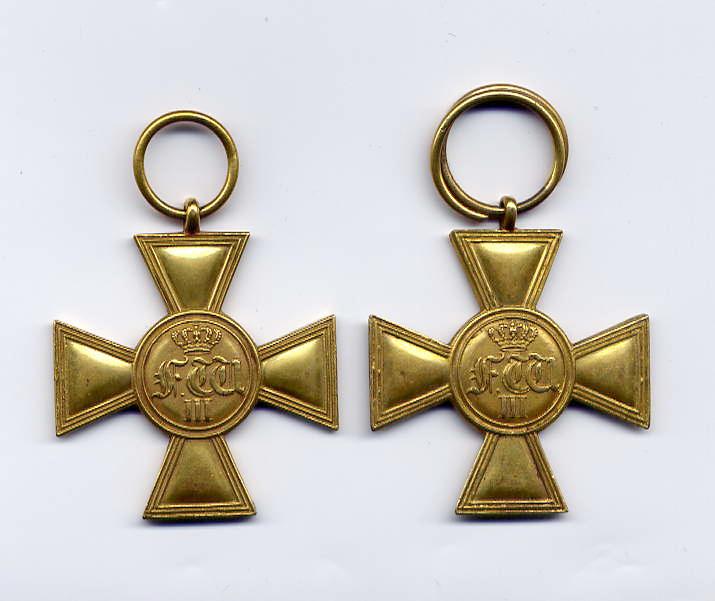




 0
0 -
Decent camera to hand now. Hopefully this shot will show much more clearly how the outer flange is cut from a single piece as Dan correctly surmised-no hairline seam to indicate two halves. Also quite clear is the separate cast beaded inner frame.

 0
0 -
OK, if I understand what you're saying, the beading alone is what secures the core inside the frame? And the beading is sectioned? Would the beading be more of a formed wire, or formed from a flat piece of stock??
Sorry, these are completely new to me.
Jim,
Exactly right, the soldered-on beading is what keeps the core in place. These segments are I think, as Dan suggested, castings.
0 -
Dan,
On closer inspection, you are absolutely right. Whereas the reverse beading is obviously made from separate pieces soldered to the flat outer flange, the obverse beading looked to be part and parcel of the frame, but I have found one corner where I can see a tiny gap under the beading. So, it looks like we have a single piece flat "flange" cut as you say from a single sheet of metal, and a multi-part cast beaded inner frame. Looks like the beaded frame each side may be made from as many as eight parts, all the joins being at the outer "corners". Some of the joins are well filled in with solder, others are very obvious.
I won't have a decent camera available until the weekend, but I will take some oblique shots then that will show the construction much better.
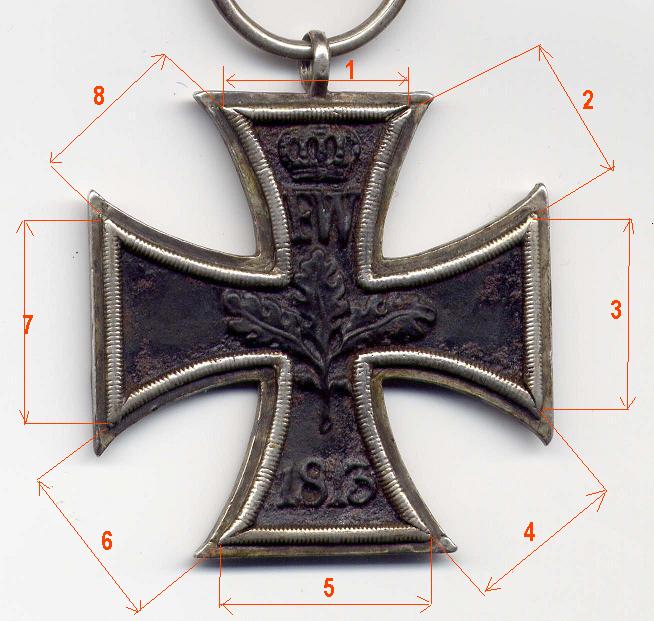
 0
0 -
Right. Gordon, that is a fabulous group, any chance of determining ownership?
Apparently yes, the seller thinks there is a very good chance of getting a name as the group came from the family. Just a case of verifying which branch of the family etc.
0 -
I don't have a decent camera to hand at the moment, but hopefully you will be able to see that there is no joint line around the centre of the frame. the outer flange being integral with the beaded inner frame of the obverse. The beaded inner frame of the reverse however, is a separate part, and you can just make out the join line. First I have ever heard of this type of construction

 0
0 -
Okay, first really unusual feature is the suspension loop. Not the usual sealed ring, but an open split ring. My first thought would have been that the original ring was lost and this was a replacement until Stogie Rick pointed out that this arrangement is correct for very early pieces ( see the 25Yr LS at left in the frame) of this era.
I gave the surface a wipe ( little more than a smear with a cotton bud barely damp with WD40) and it has certainly improved the appearance of the core. I think I'll leave it at that for now.
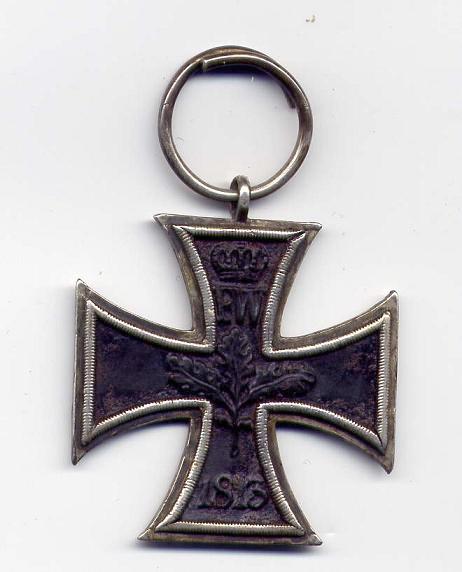


 0
0 -
Good... cos I'm dying to know what this pin is all about!!
A 'wrap-around' type frame maybe??
Marshall
Just to show how the camera can lie, its not a pin, but a ridge running along the arm. Imagine the frame consisting of the usual obverse half, and also the reverse half of the outer flange, made from several parts pinned together. Then lay in the iron core, and then to hold everthing together, the reverse part consists of the inner ribbed beading only, which is soldered into place, butted up against that ridge. Truly bizzare.
0 -
Thanks Gordon ...I understand now , so the same exact rules applied. That would mean that somewhere out there should be another 1914 "L/18" marked sister Cross to this "26" right ?
Absolutely !
0 -
I'm wary of doing anything which might have an adverse effect, but as the core doesn't have the baked enamel painted core of later crosses WD40, which I seem to recall might damage paintwork, may well be safe. I'll probably try a smear of that on a cotton bud and see where we go from there.
There are a couple of other aspects of this cross which deserve mention, including its construction which is one that so far, I haven't seen recorded, and its not one of the three methods "Iron Time" shows. The ring is pretty special too. All will be explained later today when I'll post some more pics.
0 -
The answer to the numbers issue is quite simple. Serving soldiers who lost /damaged their EKs ( and other awards) "in the line of duty" were entitled to a free replacement through official sources. Unlike awards such as the PLM and other individual State awards of the Imperial period which were now defunct, the Iron Cross, albeit in a new guise was still a valid award, still being issued and being worn by thousands of still serving soldiers.
It is perfectly logical that any such lost/damaged awards would be replaced by pieces supplied on official contract and thus show the PK mark whilst, just like the 1939 version, those sourced privately as "extras" would show the LDO mark.
0 -
Unusual ... I dont believe I have seen a "26" maker marked EK1 from the TR era before ..
Now that's a real honey Darrell, as nice a TR 1914 EK1 as I've ever seen.
 0
0 -
I was hoping maybe Gordon had seen one like this or could more readily help us in the direction of discovering this piece's maker?
Brian,
I applaud your serious attempts to broaden knowledge on the numbers of RK variants. For sure there are other makers "out there" that have yet to be positively identified. For instance W?chtler & Lange list the RK as one of their products in an original wartime publication. Of course the recent batch of nouveau riche "Tom Dick and Harry" collectors and their acolytes will no doubt squeal that such things can not exist because (a) they don't have one in their recently bought collections or (b) the wartime publications in question have not been subjected to a SEM scan.
Sadly, serious debate on such matters has been reduced to personal attacks and ego trips on a certain formerly respected site which (if the PMs I have received are anything to go by) many now feel has been reduced to little more than the equivalent of a trashy tabloid newspaper. Fortunately, such crap is not permitted here and I am informed that moves are afoot to provide a serious forum for such discussions, but for me I now find that Imperial Iron Crosses offer a far better and infinitely more civilised and interesting field of study, being so far devoid of the attentions those who have done so much to make what was once an interesting field of study into something interminably boring, so I am unwilling to be drawn into pointless debate on far less interesting 3rd Reich issues.
I wish you all the best in identifying the elusive manufacturer of the Cross on your photos.
0 -
Rick, you are absolutely correct, it is of course an "H". The first one I looked at, the first letter wasn't fully formed. Cursory glance the others were the same, but with a closer examination it's clearly Hossauer on the others !
0 -
Thanks Rick. In my ignorance of such things, I thought the split ring indicated the oriuginal had been lost and this was just a crude replacement.

That particular one is also marked Rossauer, but on the edge of the circular centre medallion at the 10 o'clock position.
0 -
Yup, Dave's baby has a new home now. Thanks for that mate. Glad to have it. Should also mention that the suspension ring is also marked EW to match the wrapper.
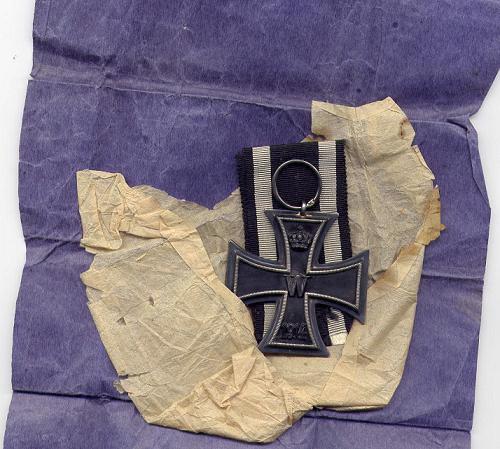
 0
0 -
And the EK2. Nice early piece with multi-part pinned frame and stepped core.
Unfortunately, it will need some TLC. Not well stored and there is active rust which will need to be stopped.
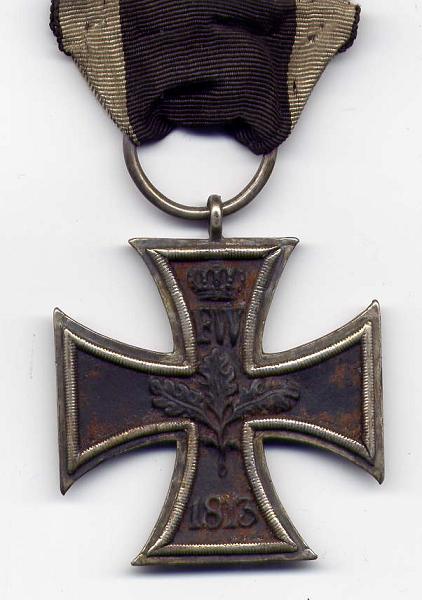
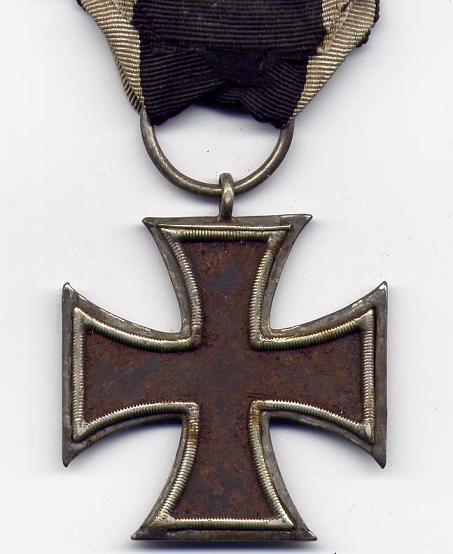

 0
0 -
Kriegsdenkm?nze
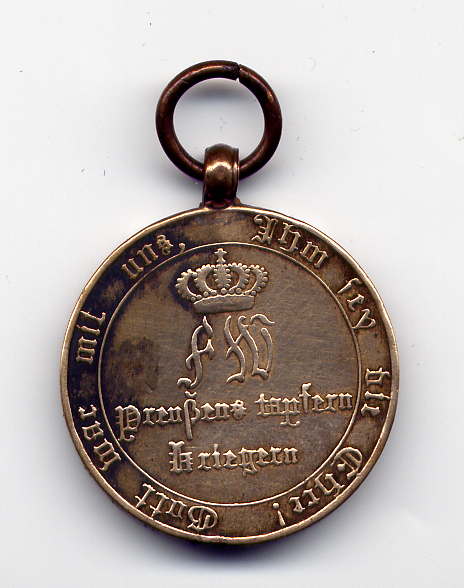
 0
0 -
4th Class Red Eagle. Also marked for Rossauer
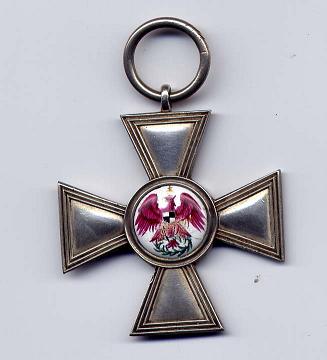
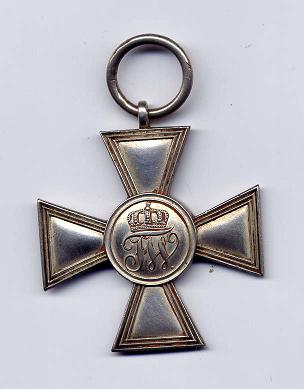

 0
0 -
25yr Long Service, Maker marked Rossauer on the edge of the lower arm.

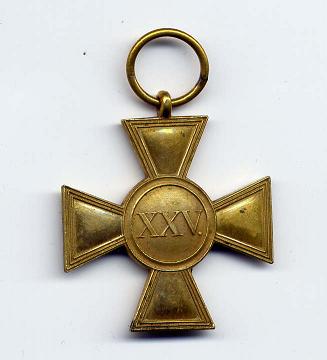

 0
0 -
Picked up at Kassel.

 0
0




Japanese Awards - Order of the Sacred Treasure
in Japan
Posted
Beautiful pieces Matthias! Congratulations. Congratulations also on your superb website !!!!